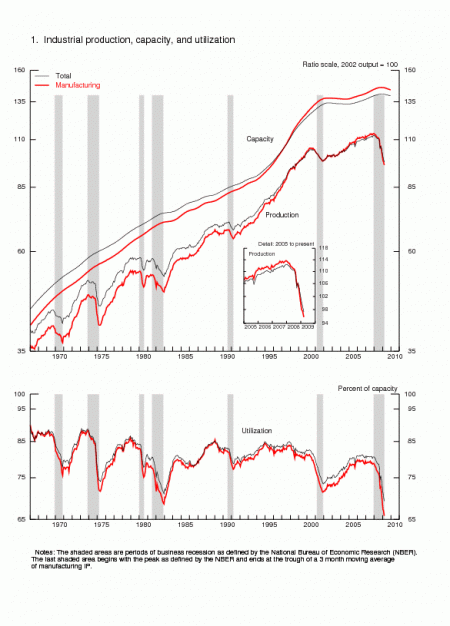
The results are in and, completely and utterly to no surprise at all, the US banking system is in decent fundamental shape. Yup, Dr. Geithner and Nurse Bernanke had the 19 largest banks in the US drop trow, grabbed their balls, told them to turn their heads and cough, and pronounced them in more or less good health. $74 billion short of rude, independent vigor perhaps, but short nothing more than a run of penicillin here and a couple of aspirin there. As needed. Of course it was only last September, when Lehman was allowed to fail for the unforgivable sin of not being Goldman Sachs, that US banking was well and truly on the brink of collapse, with the electronic/institutional equivalent of a run on the system. Since then we have heard nothing but a relentless stream of bad news about the US and world economy. But, carry on folks, nothing to see here. All is well.
The news was not all good, of course. Bank of America needs to raise something like $35 billion in capital to weather a “bad” recession (more on what makes a recession “bad” anon). Citi, the biggest basket case of them all, needs a third injection of capital from somewhere, to the tune of at least $10 billion, and Citi is looking to sell pretty much anything down to the Sharpies, toner cartridges, and paper clips. Other smaller banks need smaller injections of money and after that we’re told should be all set to ride out the storm.
What all this tells us is not anything terrifically important or insightful about the banks. They’re fucked, for years at least, but the fix was pretty much in. Treasury has about $110 billion in TARP money left in the kitty, and Congress has made it crystal clear that having voted for every law that got us in this mess, and having taken money from any WaMU lobbyist who happened to turn up, they are now shocked, SHOCKED that all of this happened. For the foreseeable future Congress is going to stand on the sideline with arms frumpily crossed and do the only thing they do well–hold vacuous hearings and try to make someone else take the blame. So Treasury isn’t getting any more money once that $110 billion runs out. Thus the stress tests would show a result that can be plugged by the available funds and nothing more. After that money is depleted, Colonel Ben and Sergeant Tim will have no arrows left in the quiver save repaid TARP money, the fed balance sheet, and the printing press. Tim and Ben knew that going into the stress tests, so it’s not surprising that the results show a $74 billion hole that can be filled comfortably with a combination of private and public investment.
What is a stress test? When one hears the word “stress test” it conjures notions of something quite kinetic and active. When a design for an airplane wing is stress tested a prototype is built and then put into a wind tunnel where it is subjected to amounts of force it will likely never see in practice. No such rigor or violence was visited upon the 19 banks in question here. The “stress test” was fundamentally an exercise in accounting, and generous accounting at that. Fire up the copy of Microsoft Excel, run a bunch of numbers assuming a pair of economic scenarios as inputs, then try to guess what reserves a bank will need to weather each scenario. As an accounting exercise there is something crushingly boring about most of this, certainly it’s nowhere near as fun as blowing up an airplane in a wind tunnel.
For the stress tests the degree of “stress” applied to the banks was calibrated by two possible economic scenarios for 2009 and 2010. The “baseline” scenario estimates US GDP contracting -2% in 2009 and rebounding to 2.1% growth in 2010. This scenario has unemployment at 8.4% in ’09, and 8.8% in ’10, with housing prices down -14% and -4% in those two years. The “adverse” scenario assumes -3.3% and +0.5% GDP, 8.9% and 10.3% unemployment, and -22% and -7% in hosing prices in 2009 and 2010.
Keeping in mind that the data out of a model is only as good as the assumptions the model takes as inputs, the parameters for “baseline” sound rather a lot more like “extremely optimistic” than anything else. For example, GDP contracted at a -6.2% annualized rate in the last quarter of 2008, while preliminary estimates for the first quarter of 2009 suggest an annualized contraction of -6.1%. That’s a scant .1% improvement. Still, the ‘baseline’ scenario in the stress tests assumes we can get back to -2% for the year. With the economy currently contracting at a rate of -6% and change over two quarters, returning to -2% will take some real doing.
On the housing front, according to the Case-Schiller Index (the best we have), housing prices dropped 18.2% during calendar 2008, and that data can be paired with the fact that roughly 19 million homes were empty at the end of 2008, easily a record number. Additionally, people who want to get mortgages today, as opposed to in 2006, have to have exotic things called ‘jobs’ and the US has been shaving half a million of those off the economy every month for some time now.
All of this makes the assumptions of the stress tests look questionable, at least. But let’s look beyond the GDP and housing numbers a bit.
A far more interesting measure of where we are in the business cycle comes from one of the Fed’s own economic measurements. This Fed statistic measures industrial capacity and industrial utilization for the US. Not all statistics are created equal, many can be cooked and spun with surprising ease. However, a few measures cut to the chase like industrial output and capacity.
Total industrial production is everything the home of the brave is making. Consumer goods, business goods, raw materials like oil and natural gas, and power created by utilities. Take a look at this chart:
On the top chart industrial capacity appears to have flattened, meaning very few new factories are being built, wells are being drilled, or power plants fired. On that same chart production itself, as opposed to capacity, is declining instead of flatlining. That is, what we COULD be making has been flat since mid-2007, but what we ARE making is declining rapidly, taking a nose dive since late 2007. Even scarier is the lower chart, which instead of showing absolute numbers shows relative ones. Of our total industrial capacity, what percentage of it is in use and what percentage of it is idle? How many of our factories, coal mines, and power plants are in use, and how many are sitting still? As you can see, that relative number is the worst it has been since data collection started in 1967, and it’s trending rather brutally down. Kind of like a missile in descent. Also, those little gray vertical bars on the charts are previous recessions, and you can decide for yourself how closely recessions track this data for industrial production and capacity. Looks pretty close to me.
Keep in mind, these numbers have absolutely zero to do with banking and Wall Street, save the extent to which credit conditions are impacting purchases by both businesses and individuals. These numbers are about the “real economy.” This is not a robber baron index, it’s a working class index. How much stuff are we making, how much could we make, and what amount of our industrial capacity is sitting idle and what amount is being used. The numbers are uniformly, and somewhat shockingly grim. Which makes me wonder why we don’t hear much about them on CNBC.
Now then, I’m not a merchant of doom, but I try to be a dispenser of realism. Looking at those charts, and recent GDP numbers, it’s hard to call the “baseline” scenario of the stress tests “baseline.” They look more like “highly optimistic” or if you want to get all intellectual and shit, “Panglossian.” The “adverse” scenario then, -3.3% in 2009 and then close to flat in 2010, would move to the “hopeful but not trying to kid ourselves” category. From the very start, it would seem the “stress tests” are using exceedingly gentle amounts of stress. And there are far more stressful situations that are not difficult to imagine.
What is scary is that even using the “adverse scenario” which, upon further review, looks not all that adverse, Bank of America needs another $35 billion to stay afloat. Not to prosper, just to stay in business. If that’s the case, then why would $74 billion of private capital arrive to plug this hole? I don’t know about you, but if I had $74 billion burning a hole in my pocket the first place I would invest it would NOT be the least solvent banks in the home of the brave. Not by a long shot.
But they will be cobbled together, these banks, no matter what the cost to the taxpayer. They are “too big to fail,” so they will not fail, no matter the cost.
There are a few interesting things to watch as we handicap the next few moves. How much private capital can be conjured to help the banks? Again, if it’s my private capital that would be not one solitary nickel, but will others fill the breach? Assuming private capital can’t or won’t make things right, how much taxpayer money will have to substitute for private investment? And, worst of all, what happens if the “adverse” scenario winds up being something rather more optimistic than adverse?
Anybody who says they know the answers to these questions is full of shit. Nobody knows. Personally I hope for the best, but try to confront reality.
Next up in Stress Test Part II: Everything You Ever Wanted to Know About Mark to Market Accounting But Were Afraid to Ask.
Read more: bank of america, geithner, stress test, TARP, Mr. Walker, Banking Porn


Got something to say to us? Then send us a letter.
Want us to stick around? Donate to The eXiled.
Twitter twerps can follow us at twitter.com/exiledonline
















17 Comments
Add your own1. doctor k | May 8th, 2009 at 3:12 pm
these articles are going to be awesome. I don’t know jack about banking so you could be pulling the wool over my eyes but if your analysis leads you to conclude that the government and major financial institutions are colluding to rip the taxpayer off to the tune of trillions of dollars you must be doing something right
2. mechagodzilla | May 8th, 2009 at 7:24 pm
Holy shit.
3. aleke | May 9th, 2009 at 12:22 am
hahaha who knew that it could be me doing that sort of horrible shit for a living
im glad we have one of them on our side
reminds me of that anonymous finance guy confiding to a reporter that he believes marx more by the day
4. porkers-at-the-trough | May 9th, 2009 at 4:35 am
Sounds like a pretty good analysis… but!
As you can see, those vertical grey lines are mostly of consistent width (duration), and the right side of all of ’em (every last one) precede a strong, bullish upturn.
And those who are sitting on top of productive (if currently underused) assets will do well when production (and consumption) resume up.
Of course, there is a chance that this is 1929 all over again (the prelude to an extended Depression), but I don’t think that will happen this time – there is just way too much information out there (internets, electronic ‘news’ media), today’s “Okies” will _not_ be content to (for example), ride out an entire Depression in famine conditions in dust-bowl Oklahoma, and, for god’s sake, people always want to buy, consume, and produce things.
Needless to say, what the GS banksters are anticipating is a resumption of consumption & production, based solely on population inflation if nothing else. And, like Venetian merchants collecting the rents from their Greek colonies astride the east-west trade routes, the banksters & brokers have tried to buy up every asset than could produce even a tenth of a cent in coming years. .
(Even the lowly penny, those made before 1982, are worth more for their metal, than as a unit of money.)
And if it ever does come to food riots in the streets, well, feeding the peasants is a hell of a lot easier than ripping them off for trillons; so the GS banksters will no doubt approve of their bought-and-owned government giving away food, cheap – as long as they get their payments (in taxpayer dollars) of course.
5. Realist | May 9th, 2009 at 9:57 am
Who would have thought?
The same scam the IMF and World Bank has running in developing nations for decades is now coming to America (and any other “nation” on fiat currency).
If you want to gain some glimpse into the future, read lending agreements of these institution, especially the collateral agreements. Feudalism, anyone?
6. Sun of Steppe | May 9th, 2009 at 10:23 am
How about the real fucts: Americans have degraded to a condition when they can no longer DESIGN a competive product: compare US food to EU, Gap track jakets to German-made dark blue military-style, but looking casual on Ebay.
This is a hive our planet and now there’s a humming sound are Americans worth 1/3 1/15 of their present value? Maybe we should KILL THEM ALL?
7. Don | May 9th, 2009 at 5:29 pm
Feudalism never dies, just changes forms.
Well written analysis Mr. Walker.
8. Carlito | May 11th, 2009 at 2:43 am
Buisiness cycles, talk about the Fed, critique of Obama administration? Sounds like something from the Tea Parties. Has the Liberal-Nihilist Exile gotten a Libertarian on board?
Anyway a good article. The most detailed piece on the “stress tests” I have seen.
9. Realist | May 11th, 2009 at 12:42 pm
I like the Exiled. I loved exile.ru more than my girlfriend. They are both a thing of the past and left a gaping hole in my soul.
Anyway, I would not call the exiled authors nihilistic. They are more like manic-depressed alcoholics slouching through the darks alleys of fringe journalism, screaming the truth during their fits of cynicism at pedestrians like only the blessed mad could do. Nihilism is Mens Health.
10. fajensen | May 11th, 2009 at 11:28 pm
If you want to gain some glimpse into the future, read lending agreements of these institution, especially the collateral agreements. Feudalism, anyone?
That may be but: How is the IMF et.al. supposed to collect on any collateral?
Go to war?? With an army made of accountants – ferrice cakes!!!
The US will just do like any other banana republic has done so many times before:
Print metric tonnes of bonds then default on them when they run out of suckers buying negative-yield USD-denominated paper; Obummah is Da Man for Da Job 😉
11. Realist | May 12th, 2009 at 4:41 am
@ fajensen
Ever heard of Africom?
The newest shining addition to the Pentagon. A little prediction: We will soon see “Humanitarian Interventions” on this godforsaken mess of a continent. Kick out the Chinese for good.
I agree on your notion of Obama Mugabenomics. This is a tried and true classic. While the economy will take a nose dive for sure and leave the majority of the population out in the rain, I would not underestimate the US capability for some serious loan collection.
12. Realist | May 12th, 2009 at 3:04 pm
Of course, in the case of the USA, you will not need an army. DC manages just fine. If you are already enraged about the Federal Reserve, go ahead and do some research on the new Special Drawing Rights (SDR) conjured up by the IMF.
What is left of the productive industry will be finished off by the coming carbon tax.
It will be poverty, but at least green poverty.
13. RT Carpenter | May 12th, 2009 at 9:44 pm
Abandon all hope, ye who enter here! America’s national debt is increasing in trillion dollar leaps. We have not had a balanced federal budget in over 50 years. Clinton’s supposed “surplus” was a scam–started by Lyndon Johnson. This was back when Social Security taxes far out distanced payments. By putting SS revenue into the general pot, the budget could appear to be balanced. Even that scam is long gone.
14. aleke | May 17th, 2009 at 12:29 pm
Realist,
Do you really think that profit and manufacturing will come to a halt because of the insubstantial commitments being banded about to “going green?” Concurrently, do you believe that if we actually did stop destroying our own habitat (since we’re not actually destroying the earth itself, but our own complex web of ecosystems instead), that foregoing a Barbie doll and a new Ford is bad?
It seems to me there’s a heavy bias of production at all costs that runs in this society. Perhaps it’s based on the broader fallacy of progress, maybe it’s the mark of a Faustian civilization that Spengler outlined. But it’s just not “Realist,” my man. You can say all you want about what you believe to be the conspiracy of global warming, but we’re doing very enormous damage. In hindsight (if there will be one), GDP and production capacity curves will seem like a cruel pantomime.
15. Realist | May 17th, 2009 at 5:48 pm
@aleke
Thank you for your comment. My academic background is in the field of economics, so my research into environmental issues is limited to the statistic and econometric analysis of public data. I make no claims about the scientific models or predictions. This I leave to the growing number of actual scientists, many of whom express their doubts about the IPCC quasi-religious consensus. Note I was referring to the effect of the tax, not its legitimacy. And yes, there are environmental problems, yet I advise Lomborgs book “Skeptical Environmentalist”.
In Europe, the green nutjobs have already done massive damage to our energy security. Axing nuclear plants in favor of wind mills and solar panels, then buying the necessary electricity from foreign plants is not an sign of particular realism, sorry. If you are serious about deindustrialising the world, you better be ready to get rid of people. Lots of them. That is the reality. Radical envirnmentalism is an exercise in genocide.
The simple truth is: Your physical comfort rests on industrial agriculture and the manufacture of commodities.
16. aleke | May 22nd, 2009 at 12:11 pm
Realist,
I’m actually aware of Lomborg’s novel, as well as the quite large amount of criticism it has garnered. I’ll have to say, there is valid fundamental criticisms of science and the present scientific consensus process that involves not only economists like Lomborg, but post-structuralists ideologically opposed to Lomborg. While this is helpful from a sociological viewpoint, I think you’ll agree it doesn’t detract from their general findings and principles. Something that is crucial to taking into account is the actual criticism leveled at the IPCC. The serious criticism takes two forms of attack, one against the methodology and one against the inherent conservatism.
The methodology concern you should find familiar as an economist (I am similarly trained), it is the political-consensus model. Not only are representatives handpicked by governments driven by ideology, but have to field thousands of experts continuously and without progress, drafting and redrafting and then remodeling the data to what is politically expedient. That is the nature of the UN though, isn’t it? The other criticism is related, but I think you’ll find it very unencouraging. It’s the conservative bias to the actual reports, which are continually underestimating dangers, risks, and reporting lowest common denominator findings. The IPCC, with all of its supposed environmentalist hysteria, did not foresee the very serious melting of the polar ice in the summer of 2007 for one simple reason, it severely underestimated damaging trends. Had they decided to factor in more recent, more pessimistic reports (since it operates on independent scientific reports, yet not ones that are as up-to-date as possible), they would have been able to better forecast such a dramatic event. The concern with the IPCC isn’t ‘alarmist’ (Reagan’s words) radical/religious environmentalism, but the very beauracratic and politically-dictated structure and actions it undertakes.
I like that you hit on the tangent of deindustrialization, because it may be what will happen involuntarily if we are to maintain this trajectory. Many of our comforts ARE due to the industrial revolution, including our longer lifespans. Many of our problems, however, are also a result of it. Ignoring the vast phenomenon of global warming, industrialization and the last couple of centuries have introduced very new and very unnatural conditions to humans as well as virtually every ecosystem planetwide. We hardly have begun to understand the ocean and we are already slated to destroy most fish species in our lifetime. Not to mention that enormous vortex of plastics drifting in an area of the Pacific Ocean twice the size of Texas. That little landmark to human ingenuity is ending up in marine birds and animals, turtles, spreading catchy-sounding pollutants such as DDT, PAHs, and PCBs. We are, of course, unable to solve this or even stop it in any meaningful way.
Not to mention the mass psychosis of humans living in industrial society, spreading their genetic social capacity far, far beyond its limits of a few dozen. It’s tribes living in cities, and it ain’t pretty. We are also a biological population, which have a very clear limit, both within the terms of populations, as well as the terms of its environment. But we keep expanding exponentially not unlike bacteria (which, by the way, also have a populational limits). We can’t keep expanding like this, we are a population of hairless apes after all. It may not be a Malthusian crash, but the principles are the same.
I used to be ideologically opposed to their viewpoint, but it seems to me those crazy environmentalists are much more correct. Economics is useful, but it has fundamentally unsound biases, towards a model of the human actor (a sociopathic invention that is more comfortable in the era of the Enlightenment rather than modernity) as well as the model of resources and growth (growth does not continue indefinitely if it is unsustainable).
I understand this is a broad response, but I believe it has pertinent information.
17. Realist | May 23rd, 2009 at 6:42 pm
aleke:
Obviously you invested some effort into this topic. I respect that. Please excuse that my answer will be considerably shorter.
Legitimacy:
1. I have, in my own private review, found no causality for temperature in CO2 levels. Its the sun, my friend.
2. IPCC: Take the number of “expert” supporters, subtract the bureaucrats, activists and the factually dissenting scientists quoted. A con job if there ever was one.
Effect:
The tax itself will solve none of the pressing environmental problems. It will however, increase the price and decrease the viability of production and agriculture. The biofuel debacle was a taste of things to come.
Demographic developments in Europe display that birthrate reduction is compatible with economic activity. Yes, the global population growth is disasterous, but the answer is not the “back to Gaia” delusion. I bet on nuclear energy technologies, productive industry and birth control instead of green jobs and even more speculation. Do you have any idea what levels of violence will come with this global austerity movement?
Leave a Comment
(Open to all. Comments can and will be censored at whim and without warning.)
Subscribe to the comments via RSS Feed